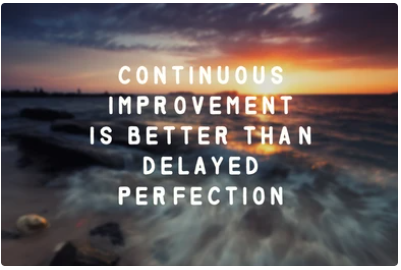SPRING 2023
NAVIGATING THE PATH TO SUCCESS
In the complex and ever-changing landscape and nature of business, strategic planning stands as a beacon of direction and purpose for enterprises. Strategy is the art and science of envisioning a desired future and charting a course to reach it, guiding organisations toward sustainable viability and success. But what makes strategic planning truly valuable fascinating and insightful? Let’s delve into the depths of this crucial process.
The Foundation of Success

At its core, strategic planning is about setting a clear path forward. It begins with a deep understanding of an organisation’s current culture and state. This introspective phase involves assessing strengths, weaknesses, opportunities, and threats (SWOT analysis), as well as reviewing and understanding the organization’s core values, culture and mission. It’s akin to knowing your starting point on a map before planning your journey.
The Power of Vision
One of the most compelling aspects of strategic planning is the creation of a compelling vision, that all stakeholders can buy into. A vision is not just a statement; it’s a vivid mental image of the future you aim to achieve with the collaboration and support of others. It’s a focal point that inspires and motivates everyone involved. A well-crafted vision brings a sense of purpose and unity to the organisation and its team, aligning individual efforts with collective goals.
Adaptability: The Strategic Imperative
In the modern business environment, adaptability is paramount. This is where outstanding strategic planning truly shines. It’s not a static process but a dynamic iterative one that accommodates change. The ability to pivot and adjust the course in response to shifting market trends, unforeseen challenges, or new opportunities is a hallmark of effective strategic planning. It’s akin to navigating a ship through stormy seas, adjusting the sails to stay on course, when the unexpected is thrown at you.
Effective Resource Allocation
Strategic planning forces organisations to make tough decisions about where to allocate their limited resources—time, money, and talent. It’s no different to budgeting for a long journey; you need to allocate resources wisely, with priority to ensure you have enough of what you need to reach your destination. This aspect of strategic planning involves prioritising initiatives that will have the most significant impact on achieving the desired outcomes.
Alignment and Collaboration
Another vital aspect of strategic planning is its ability to align diverse people, teams and departments within an organisation. It fosters collaboration by providing a shared pathway visible to all. When everyone understands their role in achieving the strategic goals, a sense of unity and synergy emerges. It’s like a good band playing well as a group, each individual and instrument contributing to an exceptional overall collective sound.
Measuring Progress and Accountability
Strategic planning isn’t just about setting goals; it’s about measuring progress and holding individuals and teams accountable. Key performance indicators (KPIs) serve as markers along the journey, helping organisations stay on track, and know where they are on the journey. This aspect brings a sense of discipline and rigor to the process, ensuring that actions align with intentions.
The Art of Risk Management
In the realm of strategic planning, the ability to assess and manage risks is hugely important. Every path forward carries uncertainties and potential pitfalls. Strategic planning involves identifying these risks, developing contingency plans, and making informed decisions. It is similar to a chess game, where foresight and calculated moves in advance are essential to winning, as are adapting to the opponents moves in the game also.
Continuous Improvement
Strategic planning is an iterative process, not a one-time event. The ability to learn from past experiences and adjust the strategy accordingly is a source of enduring insight. It’s a process of refinement over time, making it better with small incremental changes and improvements at each iteration. Organisations that embrace continuous improvement in their strategic planning are more likely to stay ahead of the curve.
Strategic Planning for a Better Tomorrow
In conclusion, strategic planning is more than a business necessity; it’s a necessary and vital part of the business journey. It combines elements of self-awareness, vision, adaptability, resource allocation, collaboration, measurement, risk management, and continuous improvement. It empowers organisations to shape their destinies intentionally rather than just taking what they get passively.
Strategic planning is the compass that navigates organisations toward their desired futures. It transforms abstract visions into concrete actions, enabling businesses to thrive in the complex and dynamic world of today and tomorrow. It’s not merely a tool; it’s a mindset—a commitment to excellence and a belief that the future can be shaped by deliberate choices and actions, in this ongoing quest for success.
GIFTS – INCOME TAX TREATMENT UPDATE

IRD have recently updated their view on when gifts are considered assessable income.
A recipient of a gift of money or money’s worth is not usually subject to income tax on the gift. The update provides circumstances where a gift could be subject to income tax in the recipient’s hands.
Generally, gifts are not subject to income tax if they do not have the character of income. A gift is typically provided to show affection, esteem or respect for an individual. However, where a gift is derived in connection with employment, a business, a profit-making activity or undertaking a voluntary activity it may be assessable income.
The following factors should be considered to determine if it is considered a gift:
- If the payment is in relation to any services or specific work provided
- If the payment is recurring (rather than just a one-off)
- The payments are commonplace as a matter of practice in the occupation or industry (e.g. tips)
- Whether the recipient has any expectation of receiving the gift
- Whether there is any correspondence, bargaining or negotiations in relation to the gift
It is important to consider each situation on a case-by-case basis. However, remember this applies to both monetary gifts and non-monetary gifts that are convertible to money.
SEPTEMBER RENTAL MARKET AND INVESTMENT NEWS ROUNDUP
Landlords versus tenants
According to RNZ, over the past six years, New Zealand’s rental market has seen significant shifts favoring tenants, including the banning of rental loss deductions, extending capital gains tax through the bright-line test, prohibiting rental auctions, and eliminating no-cause terminations. The introduction of healthy home standards and the removal of mortgage interest deductions for landlords have increased costs for property owners, potentially impacting rental prices. Some parties, like National and ACT, aim to reverse these changes, advocating for no-cause evictions and restoring interest deductibility to encourage more investment in the rental market. While these policies have leaned toward tenant benefits, achieving a balanced playing field may require further improvements in the tenancy tribunal system, addressing issues related to accessibility, awards, and compensation for both tenants and landlords.
Property Investment Updates:
Economists interpret recent REINZ housing market data as indicating growing momentum in the market, with predictions of price rises in the coming year. Westpac forecasts an 8% price increase, Kiwibank predicts 6%, ANZ anticipates 4% for the second half of this year, and ASB expects prices to continue rising, reaching their previous peak by early-to-mid-2025. The surge in migration, increasing demand, and a cooling residential construction boom contribute to the housing market’s strength. Falling mortgage rates and an ongoing supply shortage are also driving factors, supporting confidence and activity in the market. The housing market’s future performance may be influenced by the upcoming election and potential policy changes.
Rising mortgage interest rates have made buying a home more expensive than renting, says BNZ chief economist Mike Jones. He compared the costs of buying a home at the NZ median house price with renting a property. Currently, the average annual expense associated with buying a median New Zealand home exceeds that of renting by just over $38,000 per year. However, the gap may be offset by a positive house price revaluation if prices rise. Jones noted that despite the financial analysis, non-financial considerations like security of tenure and personal preferences also play a significant role in the buy/rent decision.
TIME TO REVIEW YOUR HEALTH AND SAFETY PLAN?
Health and safety is a vital part of any business, but when was the last time you checked your company’s health and safety plan?
Under the Health and Safety at Work Act 2015, both “Persons Conducting a Business or Undertaking” (PCBU) and workers (including employees and contractors) have health and safety duties in the workplace. The duties relate to their own health and safety and that of their co-workers, clients, and even unconnected members of the public.

The Act requires you to have a high degree of engagement with your staff about health and safety matters.
Whether you have a couple of staff or two hundred, here’s a three-step strategy to ensure you’re covered:
Step One: Assess your risks
Gather your team and discuss all the potential risks and hazards that might face your business. If you’re office-based, what kind of risks should you look out for? If you work outside, are you prepared for all eventualities?
Don’t overlook social hazards, such as overworking, bullying, stress, and burnout. They’re just as important as physical risks.
Consider what you’re already doing to mitigate your risks and how you can do even more.
Step Two: Commit to a plan
Once you’ve thoroughly assessed your workplace risks and hazards, you’ll need a health and safety plan with procedures to mitigate their impact.
Your plan has to be actionable, practical and realistic in the context of your everyday work. Consider how the new procedures will be adopted.
Through your new plan, you might need new training records, lists of first-aid equipment, or a new induction for incoming staff. It could also feature HR policies on workplace health and safety that employees can agree to.
As a New Zealand business, your company also needs a process for reporting notifiable events to WorkSafe.
Step Three: Action your plan
Don’t draw up a plan and leave it to gather dust. Make sure it’s implemented as soon as possible, and take time out of your working day to get everyone on board.
Health and safety is an ongoing challenge and requires ongoing attention. Make sure you run regular courses and drills to keep everyone up to date, and include staff on updates, so they can raise any new risks and hazards.
In particularly dangerous and hazardous sectors, it can help to set targets to measure the impact of your plan. For example, a building company could have targets for keeping workplace injuries low, or an office-based business could have a target to prevent sick days and burnout.
UNDERSTANDING FINANCIAL STATEMENTS
Not everyone’s favourite topic I am sure, but Financial Statements also provide a comprehensive overview of an enterprise’s financial performance and position, it takes a bit of work and practice but the more often you review them with someone who can mentor you the more you will learn, and that may result in better decisions.
They are used by Owners, Bankers Investors, Analysts, and other Stakeholders to assess an enterprises financial health and to make informed decisions.
To understand Financial Statements, you need to understand three components:
- Statement of Financial Performance (Income Statement or Profit & Loss)
- Statement of Financial Position (Balance Sheet)
- Statement of Cash Flows (not always completed)
By reviewing the Financial Statements, you will gain a comprehensive understanding of an enterprise’s financial performance, including its profitability, liquidity, solvency, and overall financial health. It is essential to review these statements in conjunction with other relevant information such as budgets/forecasts, and year to date reports/performance, together with industry benchmarks to make well-informed decisions and assessments about an enterprises financial viability.
There may be additional tools to use, together with the analysis of the Financial Statements and limitations to them that readers of need to be aware of:
- Interpreting – Comparative analysis, industry benchmarking, ratio analysis – may be needed.
- Financial Ratios – Liquidity, Solvency, Profitability & Efficiency ratios – provided indicators.
- Limitations – reliance on historic data, accounting policies and estimates, that may only capture financial data, they may look backward rather than forward (where you are going).
Statement of Financial Performance (Income Statement or Profit & Loss)
An Income Statement helps assess an enterprises profitability and ability to generate consistent income streams.
It presents a summary of an enterprises revenues, expenses, gains, and losses over a defined period, including:
- Revenue: Income generated from the enterprise’s primary operations.
- Expenses: Costs incurred in generation of revenue, such as purchases, wages and overheads.
- Gains and losses: Resulting from non-operating activities, such as sale of assets or foreign exchange gains and losses.
Statement of Financial Position (Balance Sheet)
Helps assess an enterprises solvency, liquidity, and overall financial stability.
It presents a snapshot of an enterprises financial position at a specific point in time, on one day of the year (31 March for instance), it consists of three key components:
- Assets: These represent what the enterprises owns, such as cash, accounts receivable, inventory, property, and equipment.
- Liabilities: These represent the enterprises obligations, such as loans, accounts payable, and accrued expenses.
- Equity: Represents the owners’ accumulated funds in the business, representing their interest in the enterprises assets after deducting liabilities. In simple terms the assets less the liabilities represent the owners share or investment, (this is very simplified for here).
Statement of Cash Flows
A Cash Flow Statement helps evaluate an enterprise’s ability to generate and manage cash, providing insights into its liquidity and financial flexibility.
It presents information about the cash inflows and outflows from an enterprises operating, investing, and financing activities during a specific period, consisting of three main areas:
- Operating activities: Cash flows from day-to-day business operations, including sales, payments to suppliers, and wages.
- Investing activities: Cash flows from buying or selling long-term assets, such as property, equipment, or investments.
- Financing activities: Cash flows from raising capital or repaying debts, including issuing or buying back shares, paying dividends, or taking loans.
It you would like a hand with this area, mentoring or more information on any of the above topics, please contact us at Johnston Associates.
Disclaimer – While all care has been taken, Johnston Associates Chartered Accountants Ltd and its staff accept no liability for the content of this article; always see your professional advisor before taking any action that you are unsure about.
FOLLOW US ON SOCIAL MEDIA
Johnston Associates has decided to provide more regular information via social media channels – namely Facebook and LinkedIn. We will continue to publish our quarterly newsletter, but you will find more regular and timely information through these channels.
So choose your preferred outlet by clicking on one of the buttons below, and don’t forget to follow us!
IMPORTANT PAYMENT DATES TO REMEMBER

OCTOBER 30th 2023
- Provisional tax payments are due if you have a March balance date and use the ratio option
- Your GST return and payment are due for the taxable period ending 30 September
NOVEMBER 28th 2023
- Your GST return and payment is due for the taxable period ending 31 October

Disclaimer – While all care has been taken, Johnston Associates Chartered Accountants Ltd and its staff accept no liability for the content of this newsletter; always see your professional advisor before taking any action that you are unsure about.




